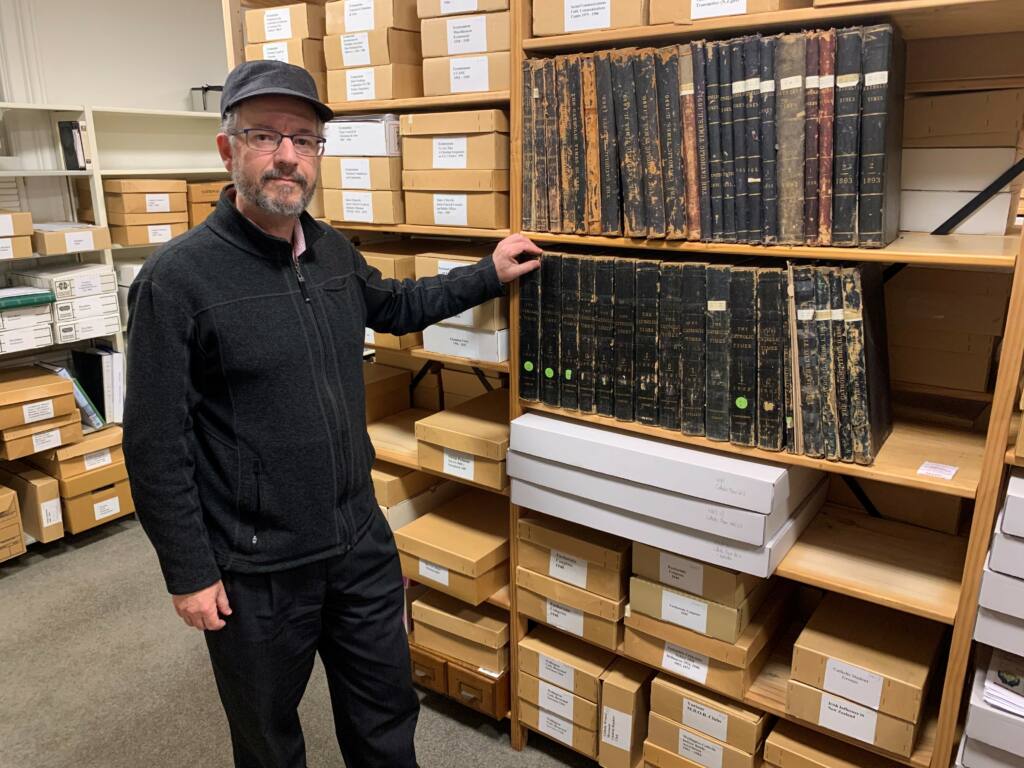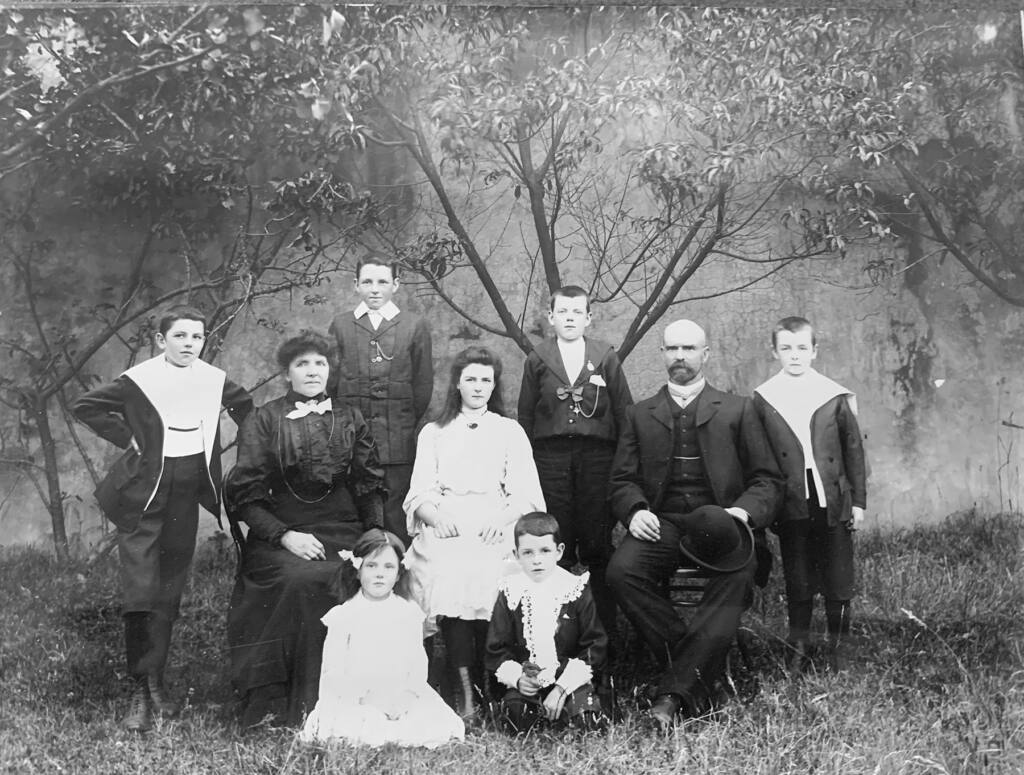WelCom June/July 2021
Michael Fitzsimons talks to archdiocesan archivist Peter Holm about why it’s important for the Church to take its past seriously.

Photo: Michael Fitzsimons
Maintaining a reliable, well-organised archive provides the Church with a sense of continuity and a knowledge of what it has done over time, says the Archdiocese of Wellington’s archivist, Peter Holm.
‘It’s a feature of a well-run organisation of any type that it has a long-term memory of its past. It can answer questions about what it has done over time and why. Not to be able to answer questions about your history is a poor performance.’
Peter is a professional archivist who worked and was trained at National Archives (later to become Archives NZ) from 1989–2002. Not a Catholic himself, he says the appeal of the job is immersing himself in a new field, the challenge of having so much to learn about. He did a master’s degree in History and says ‘learning about the past is something that intrinsically appeals to me’.
An organisation needs records that allow you to look behind the scenes and see the issues, the thinking at the time and the decisions promulgated, says Peter. Access to reliable records is a valuable resource for informing current policy. A well-maintained archive also documents the involvement of the archdiocese in wider social issues such as international aid, refugee resettlement and legislative debate.
‘When people want to know what happened back then, you can’t always just call old people,’ says Peter. ‘At a certain point, that’s not going to work. The Catholic Church has 180 years of activity in this country, and a record of what the Church has done, and why, is important not just for the Church but also for general New Zealand social history.’
When Peter was appointed to the role two years ago, his brief was to focus his efforts on the administrative records of the archbishops and their administrations – the corporate memory of the archdiocese.
‘Generally, the most important things to keep, from an archival point of view, are decisions made at the senior levels of an organisation – by the archbishop and decision-making bodies that generate minutes and have papers given to them. That will be the core material. The other part of the job is to determine what should be destroyed, as most administrative records don’t bear permanent retention.’
Aura of venerability
A diocese is required to have an historical archive under Canon Law. The Wellington Archdiocese’s archive collection was put together as an archive in the 1980s. A lot of things that are there are things that have ‘accidentally happened not to be thrown out”, says Peter.
‘Some of it deserved to be thrown out but it gets harder and harder to throw things out the older they get. They get an aura of venerability. For example, we have a collection of things from Archbishop Redwood – little pieces of paper he had never thrown away; peoples’ addresses; a recipe for a cough mixture; a sign-language alphabet. I can’t just bin that so it’s all nicely arranged in an acid-free folder as interesting little ephemera to do with character.
‘When things like that survive accidentally, they start to get interesting. The general rule across the archive world – you tend to have a “grandparent” date – is if it’s older than that it’s going to be kept. It used to be 1914 but these days it’s around 1945.’
Peter says the earliest ledgers of the diocese are particularly interesting.
‘You’d expect ledgers just to be expenditure but at the back of these ledgers is a section marked particular events that provide a lot of historical detail about what was going in the diocese. There’s also a vivid description of the death of one of the early nuns who had come to Wellington with Bishop Viard when he first arrived in 1850. There are pages of detail about the terrible suffering of her last days, which she bore with dignity and faith. Perhaps it was recorded as a good example for others – notable suffering and notable bearing of suffering.’

Look closely at this photograph and you can see a boy seated at the front of the group with a sparrow on his finger – the future Cardinal Peter McKeefry. According to his sister Annie, when the party had been posed, a sparrow flew down and lit on his forefinger. The bird remained on his finger all the time the photographs were taken. The photo of Michael and Mary McKeefry and family was taken on the day that Mary (Sr Mary Gerard), seated between her parents, entered the convent in 1907. Annie, aged 4, also entered the convent. Photo: Archdiocese of Wellington Archives
Electronic era
The business of keeping archives has become more challenging in the electronic age, says Peter. ‘Most administrative processes these days are digital – countless individual documents in little personal silos. Everything can be lost when a person leaves. The old office culture has died over the last 20–30 years and there has been a loss of administrative systems, which have been in place for hundreds of years.
‘We may just have to keep all of the records associated with key positions and bodies – archbishop, general manager, governing bodies and secretaries. We can assume the crucial material relating to important decisions and activities in the diocese will have come across the desks of these people.’
In addition to administrative records, the archives contain material that is very relevant to the New Zealand’s social history. For example, a full set of The Catholic Times, the Archdiocesan newspaper begun by Archbishop Redwood out of annoyance with the NZ Tablet, reveal Catholic attitudes on issues of the day, such as women’s suffrage. The Catholic Times (WelCom’s predecessor) ran from 1888 to 1894.
Catholic Archdiocese of Wellington Archives (CAWA) are located in Viard House, beside the Catholic Centre in Thorndon. It is open on weekdays, except for Wednesday, from 9am to 5pm. CAWA is a private archive, so access is on application. Appointments to visit can be made by contacting archives@wn.catholic.org.nz or phone (04) 496-1740. The archivist will look for relevant holdings but research services on users’ behalf
is limited.